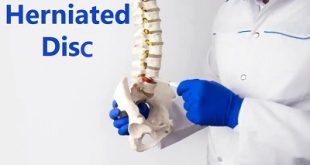What is hemolytic uremic syndrome?
Hemolytic uremic syndrome, or HUS, is a kidney condition that happens when red blood cells are destroyed and block the kidneys’ filtering system. Red blood cells contain hemoglobin – an iron-rich protein that gives blood its red color and carries oxygen from the lungs to all parts of the body.
When the kidneys and glomeruli – the tiny units within the kidneys where blood is filtered – become clogged with the damaged red blood cells, they are unable to do their jobs. If the kidneys stop functioning, a child can develop acute kidney injury – the sudden and temporary loss of kidney function. Hemolytic uremic syndrome is the most common cause of acute kidney injury in children.
Pathophysiology
Hemolytic-uremic syndrome, like thrombotic thrombocytopenic purpura (TTP), involves nonimmunologic platelet destruction. Endothelial damage is common. Loose strands of platelets and fibrin are deposited in multiple small vessels and damage passing platelets and red blood cells (RBCs), causing significant thrombocytopenia and anemia (microangiopathic hemolytic anemia). Platelets are also consumed within multiple small thrombi, contributing to the thrombocytopenia.
Multiple organs develop bland platelet–von Willebrand factor (VWF) thrombi localized primarily to arteriocapillary junctions, described as thrombotic microangiopathy. The brain, heart, and kidneys are particularly likely to be affected. The microthrombi do not include RBCs or fibrin (unlike thrombi in disseminated intravascular coagulation) and do not manifest the vessel wall granulocytic infiltration characteristic of vasculitis. Large-vessel thrombi are uncommon.
What causes hemolytic uremic syndrome?
While the cause of HUS has not been established with certainty, researchers believe that an abnormal inflammatory reaction is stimulated in the blood stream causing platelets (the parts of the blood that form clots) to sludge in small blood vessels and form blood clots where they are not supposed to. This uses up the platelets and causes a shortage of them in the rest of the body. This abnormal reaction may be caused by a yet unidentified chemical that is produced in blood plasma (the fluid or non-cellular part of the bloodstream).
The triggering events for HUS are varied and include:
- Enterohemorrhagic Coli is a type of bacteria that causes bloody diarrhea. E. coli is a very common type of bacteria in the body, and it is only the OH157:H7 type that causes the problem. It can be found in undercooked meat and other foods; and is one of the causes of food recalls and restaurant-related food poisoning outbreaks. This accounts for almost 90% of HUS in children. The 2011 outbreak of HUS in Germany was due to a different type of Shigela toxin-producing E. coli called 0104:H4.
- Pregnancy and the early postpartum (after delivery) time period and the use of birth control pills are the more common associations with HUS.
- Pneumonia caused by the Streptococcus pneumoniae bacteria is another possible precipitating factor. HUS is rare complication of this common infection. Most often, this pneumonia is treated with antibiotics as an outpatient. However, it is the cause of 40% of atypical HUS.
- Medications may be also associated with HUS, including some chemotherapy and immunosuppression drugs, birth control pills, ticlopidine (Ticlid, an anti-platelet drug) and quinine (Quinerva, Quinite) an anti-platelet drug.
- AIDS may be associated with HUS.
Risk factors
- Ingestion of contaminated food or water
- Known community outbreak of toxicogenic E coli
- Exposure to infected individuals in institutional settings
- Genetic predisposition (atypical HUS)
- Bone marrow transplant
- Exposure to cyclosporine, some chemotherapy agents, targeted cancer agents, and quinine
- Pregnancy- or postpartum-related
Symptoms
STEC-HUS often begins with vomiting and diarrhea, which may be bloody. Within a week, the person may become weak and irritable. People with this condition may urinate less than normal. Urine output may almost stop.
Red blood cell destruction leads to symptoms of anemia.
Early symptoms:
- Blood in the stools
- Irritability
- Fever
- Lethargy
- Vomiting and diarrhea
- Weakness
Later symptoms:
- Bruising
- Decreased consciousness
- Low urine output
- No urine output
- Pallor
- Seizures — rare
- Skin rash that looks like fine red spots (petechiae)
Complications
HUS can cause life-threatening complications, including:
- Kidney failure, which can be sudden (acute) or develop over time (chronic)
- High blood pressure
- Stroke or seizures
- Coma
- Clotting problems, which can lead to bleeding
- Heart problems
- Digestive tract problems, such as problems with the intestines, gallbladder or pancreas
How is hemolytic uremic syndrome in children diagnosed?
A health care provider diagnoses hemolytic uremic syndrome with
- A medical and family history
- A physical exam
- Urine tests
- A blood test
- A stool test
- Kidney biopsy
Medical and Family History
Taking a medical and family history is one of the first things a health care provider may do to help diagnose hemolytic uremic syndrome.
Physical Exam
A physical exam may help diagnose hemolytic uremic syndrome. During a physical exam, a health care provider most often
- Examines a child’s body
- Taps on specific areas of the child’s body
Urine Tests
A health care provider may order the following urine tests to help determine if a child has kidney damage from hemolytic uremic syndrome.
- Dipstick test for albumin. A dipstick test performed on a urine sample can detect the presence of albumin in the urine, which could mean kidney damage. The child or caretaker collects a urine sample in a special container in a health care provider’s office or a commercial facility. For the test, a nurse or technician places a strip of chemically treated paper, called a dipstick, into the child’s urine sample. Patches on the dipstick change color when albumin is present in the urine.
- Urine albumin-to-creatinine ratio. A health care provider uses this measurement to estimate the amount of albumin passed into the urine over a 24-hour period. The child provides a urine sample during an appointment with the health care provider. Creatinine is a waste product that is filtered in the kidneys and passed in the urine. A high urine albumin-to-creatinine ratio indicates that the kidneys are leaking large amounts of albumin into the urine.
Blood Test
A blood test involves drawing blood at a health care provider’s office or a commercial facility and sending the sample to a lab for analysis. A health care provider will test the blood sample to
- Estimate how much blood the kidneys filter each minute, called the estimated glomerular filtration rate, or eGFR. The test results help the health care provider determine the amount of kidney damage from hemolytic uremic syndrome.
- Check red blood cell and platelet levels.
- Check for liver and kidney function.
- Assess protein levels in the blood.
Stool Test
A stool test is the analysis of a sample of stool. The health care provider will give the child’s parent or caretaker a container for catching and storing the stool. The parent or caretaker returns the sample to the health care provider or a commercial facility that will send the sample to a lab for analysis. Stool tests can show the presence of E. coli O157:H7.
Kidney Biopsy
Biopsy is a procedure that involves taking a small piece of kidney tissue for examination with a microscope. A health care provider performs the biopsy in an outpatient center or a hospital. The health care provider will give the child light sedation and local anesthetic; however, in some cases, the child will require general anesthesia. A pathologist—a doctor who specializes in diagnosing diseases—examines the tissue in a lab. The pathologist looks for signs of kidney disease and infection. The test can help diagnose hemolytic uremic syndrome.
How is hemolytic uremic syndrome treated in a child?
There is no treatment to stop HUS. But treatment can be done to help support your child during the illness. Your child may need close monitoring in an intensive care unit (ICU). Treatments in ICU may include:
- IV (intravenous) fluids and electrolytes. This is done to treat dehydration.
- Blood transfusions. Your child may need a blood transfusion to treat a medium to severe case of low red blood cell count (anemia).
- Your child may need IV nutrition if he or she has severe digestive problems.
- Dialysis to help failing kidneys. During dialysis, a machine is used to filter waste products from the blood. Dialysis is only needed in the most severe cases of HUS. It is usually temporary. But people with severe kidney damage could need it long-term.
- Your child may need medicine to treat high blood pressure.
How can hemolytic uremic syndrome be prevented?
Following this list of simple tasks may help prevent hemolytic uremic syndrome due to E. coli O157:H7:
- Avoid unclean swimming areas.
- Avoid unpasteurized milk, juice, and cider.
- Clean kitchen utensils and food surfaces often.
- Cook meat to an internal temperature of at least 160°F/70°C.
- Defrost meat in the microwave or refrigerator.
- Keep children out of pools if they have had diarrhea.
- Separate raw foods from cooked items.
- Wash hands before eating.
- Wash hands after using the restroom and after changing diapers.
- Wash hands after petting farm animals.
 Diseases Treatments Dictionary This is complete solution to read all diseases treatments Which covers Prevention, Causes, Symptoms, Medical Terms, Drugs, Prescription, Natural Remedies with cures and Treatments. Most of the common diseases were listed in names, split with categories.
Diseases Treatments Dictionary This is complete solution to read all diseases treatments Which covers Prevention, Causes, Symptoms, Medical Terms, Drugs, Prescription, Natural Remedies with cures and Treatments. Most of the common diseases were listed in names, split with categories.







